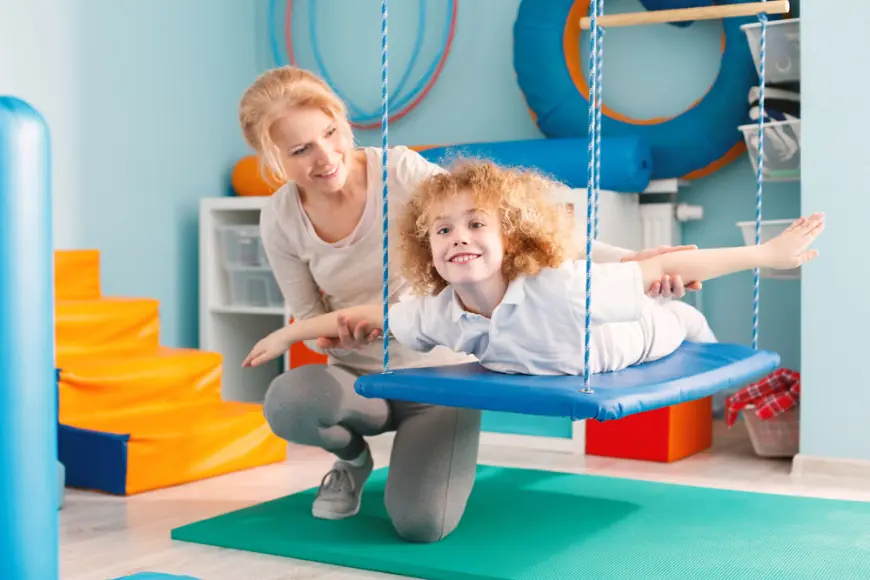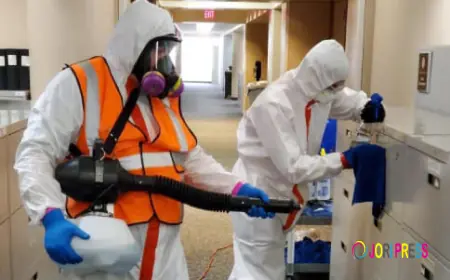Top Benefits of Pediatric Occupational Therapy for Child Development
Discover the top benefits of pediatric occupational therapy for child development. Learn how OT builds life skills, boosts confidence, and supports independence.

Introduction
Raising a child is one of the most rewarding—and sometimes challenging—experiences in life. Every child develops at their own pace, but what happens when your child struggles with things that come easily to others? That’s where pediatric occupational therapy (OT) comes in.
This therapy goes far beyond helping kids "catch up"—it builds confidence, independence, and skills essential for everyday life. Whether it’s holding a crayon, tying shoes, managing big emotions, or focusing in school, occupational therapy can help children thrive in their unique way.
In this article, we’ll explore the Top Benefits of Pediatric Occupational Therapy for Child Development and show how the right support at the right time can make a world of difference.
What Is Pediatric Occupational Therapy?
At its core, pediatric occupational therapy helps children gain the skills they need to do daily tasks—or “occupations”—that are appropriate for their age. These might include:
-
Playing with peers
-
Getting dressed
-
Feeding themselves
-
Writing, drawing, and coloring
-
Managing attention and behavior
-
Responding appropriately to sensory input
At Kick Start Therapy, our licensed therapists work one-on-one with children using play-based techniques that feel fun, while targeting specific developmental goals.
Top Benefits of Pediatric Occupational Therapy for Child Development
Let’s dive into how OT can support your child’s growth across various areas:
1. Builds Fine Motor Skills
Fine motor skills are essential for activities like buttoning shirts, tying shoes, holding utensils, and writing. Children who struggle with these tasks may get frustrated or avoid them altogether.
Occupational therapy uses targeted exercises to strengthen small muscle groups in the hands and fingers. Through creative activities like crafts, games, and manipulatives, children gain control, coordination, and confidence in their fine motor abilities.
2. Improves Gross Motor Coordination
Many kids receiving OT also need help with gross motor skills—those larger movements used for walking, jumping, climbing, and balancing.
Therapists may use obstacle courses, ball games, yoga, or balance boards to improve strength, posture, and coordination. Over time, children feel more comfortable and confident moving their bodies in the world around them.
3. Supports Sensory Processing and Integration
Some children are highly sensitive to noise, textures, smells, or movement. Others may seem unaware of sensory input, seeking out intense sensations like spinning or crashing.
OT helps children process and respond to sensory input in more appropriate ways. This can reduce anxiety, improve behavior, and make everyday environments—like school or the grocery store—more manageable.
4. Enhances Self-Care and Daily Living Skills
Getting dressed, brushing teeth, using the bathroom, feeding themselves—these are tasks adults take for granted, but for many children, they can be difficult or even overwhelming.
OT breaks down these skills into manageable steps and uses repetition, visuals, and routines to help children become more independent in their daily lives. It’s not just about mastering a task—it’s about building pride and ownership in doing it themselves.
5. Boosts Emotional Regulation and Social Skills
Children often struggle with emotions they don’t fully understand. This can lead to meltdowns, aggression, withdrawal, or trouble making friends.
Occupational therapists help kids recognize emotions, develop coping strategies, and build social awareness. Through role-playing, games, and sensory calming techniques, children learn how to manage big feelings and interact more positively with peers.
6. Increases Focus and Attention Span
In today’s fast-paced world, focus is a challenge for many children—especially those with ADHD, sensory processing challenges, or learning differences.
OT uses structured activities to build attention, impulse control, and task completion. Therapists also work with parents and teachers to create routines and environments that support learning and calm.
7. Improves Handwriting and Academic Readiness
Poor handwriting can affect a child’s confidence and success in school. If your child has difficulty forming letters, spacing words, or gripping a pencil, OT can help.
Through fun, hands-on methods, therapists improve hand strength, visual-motor integration, and endurance. This supports not only writing but also reading, cutting, and classroom participation.
8. Encourages Play and Creativity
Play is how children learn best—and OT embraces that fully. Each therapy session is designed to be engaging and fun, with activities that feel like games but are tailored to specific developmental goals.
Therapists use puzzles, building blocks, pretend play, and sensory materials to help children explore and grow in a way that feels natural.
9. Reduces Family Stress
When a child struggles with everyday tasks, it can cause stress for the entire family. Parents may feel helpless or frustrated, siblings may be affected, and daily routines can become battles.
With the right OT support, children become more independent—and families gain practical strategies to support their child. This brings more calm, confidence, and joy to the home.
10. Lays the Foundation for Lifelong Success
Early intervention through occupational therapy doesn’t just address current challenges—it sets children up for success later in life. Skills learned in OT—like organization, coordination, and self-regulation—transfer into the classroom, playground, and beyond.
Children who receive occupational therapy often experience increased self-esteem, stronger relationships, and better outcomes in school and social situations.
When Should You Consider OT for Your Child?
You don’t need a formal diagnosis to seek occupational therapy. In fact, early support can often prevent challenges from becoming bigger down the line.
Here are some signs your child may benefit:
-
Trouble using utensils, buttons, or zippers
-
Avoids certain textures, noises, or activities
-
Delays in crawling, walking, or coordination
-
Difficulty with transitions or changes in routine
-
Struggles with attention, focus, or following instructions
-
Emotional outbursts or trouble managing frustration
-
Difficulty playing with peers or sharing
-
Poor handwriting or trouble gripping a pencil
If these challenges sound familiar, a pediatric OT evaluation can help determine the best path forward.
Why Choose Kick Start Therapy?
At Kick Start Therapy, we specialize in helping children build the skills they need to succeed—at their own pace and in their own way.
Our experienced therapists use evidence-based, child-led techniques to create personalized treatment plans. We believe in partnering with families, making therapy a collaborative, empowering experience from day one.
Whether your child needs help with motor skills, sensory regulation, self-care, or emotional development, we’re here to support your journey.
Conclusion
Understanding the Top Benefits of Pediatric Occupational Therapy for Child Development shows just how powerful early support can be. From mastering basic tasks to developing emotional and social resilience, OT plays a vital role in helping children thrive.
Every child deserves the chance to feel confident, capable, and connected—and pediatric OT makes that possible.
If you think your child could benefit from occupational therapy, don’t wait. Contact Kick Start Therapy today to schedule a consultation. Let’s help your child reach their full potential—one small step at a time.
What's Your Reaction?
 Like
0
Like
0
 Dislike
0
Dislike
0
 Love
0
Love
0
 Funny
0
Funny
0
 Angry
0
Angry
0
 Sad
0
Sad
0
 Wow
0
Wow
0
















































